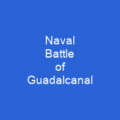The Battle for Henderson Field: A Turning Point in World War II
Imagine a fierce battle that changed the course of history, where land, sea, and air forces clashed in a brutal struggle for control over an airstrip on Guadalcanal. The Battle for Henderson Field, fought from October 23-26, 1942, was one such pivotal moment during World War II. This battle marked the last serious ground offensive by Japanese forces on Guadalcanal and set the stage for a series of events that would ultimately lead to Japan’s defeat in the Pacific theater.
The Prelude: A Race Against Time
On August 7, 1942, Allied forces landed on Guadalcanal with the goal of securing an airfield. The Japanese, aware of this threat, scrambled to respond. By August 19, various units of the 17th Army arrived on the island under Lieutenant General Harukichi Hyakutake’s command. Their mission was clear: drive Allied forces from Guadalcanal and reclaim Henderson Field.
The First Attempt: A Frustrating Failure
The Japanese regrouped west of the Matanikau River, preparing for a renewed assault. Meanwhile, US forces concentrated on strengthening their Lunga defenses and received reinforcements. The first attempt to recapture Henderson Field failed on August 21, followed by another defeat at Edson’s Ridge from September 12-14.
The Final Push: A Desperate Gamble
With the threat of Allied air superiority, the Japanese decided to launch a final offensive. On October 9, General Hyakutake arrived with his forces, including the 2nd (Sendai) Infantry Division. The division was split into three units: Left Wing Unit under Major General Yumio Nasu, Right Wing Unit under Major General Kiyotake Kawaguchi, and a reserve led by Maruyama. Their goal was to attack from south of Henderson Field.
The Battle Intensifies: A Test of Willpower
On October 20, Maruyama’s forces reached the Lunga River but were mistaken about their proximity to US positions. They launched an attack on October 22, facing heavy resistance from American troops. The Japanese suffered significant casualties, with over 300 killed in the first attacks.
The Air Battle: A Test of Skies
On October 24, Japanese aircraft attacked Henderson Field in six waves, engaging CAF fighters and Marine anti-aircraft guns. Despite continuous attacks, American defenses held strong, keeping many defenders in foxholes due to the constant threat.
The Final Days: A Desperate Retreat
On October 26, Maruyama called off further attacks and ordered his forces to retreat. The Americans recovered and buried or burned the remains of Maruyama’s men. Shoji’s right wing survivors headed for Koli Point, while Maruyama’s left wing retreated back to the Matanikau River area.
The Aftermath: A Turning Point
Although the Japanese Army’s attack on the Allied Lunga perimeter was decisively defeated in this battle, it marked a turning point. The Japanese were not yet ready to give up and made immediate plans for further offensives against Henderson Field.
The Battle of Santa Cruz Islands: A Sibling Conflict
While Hyakutake’s troops were attacking the Lunga perimeter, Japanese warships under Isoroku Yamamoto moved into position near the southern Solomon Islands. Allied naval carrier forces in the area hoped to meet the Japanese naval forces in battle.
The Naval Battle of Guadalcanal: A Clash of Titans
On October 26, two opposing carrier forces confronted each other, resulting in the Battle of the Santa Cruz Islands. After an exchange of carrier air attacks, Allied surface ships retreated with one carrier sunk and another heavily damaged. The participating Japanese carriers also retreated due to high aircraft and aircrew losses.
The Final Concession: A Defeated Retreat
Despite their initial success, the Japanese were not ready to give up. They planned to bombard Henderson Field again in November 1942 but were intercepted by Allied naval forces. The Naval Battle of Guadalcanal from October 13-15 resulted in almost complete destruction of the transport convoy carrying the remainder of the 38th Division.
The Legacy: A Turning Point in World War II
The Battle for Henderson Field was a turning point that marked the end of serious Japanese ground offensives on Guadalcanal. The Allies continued their island-hopping campaign, leading to Japan’s eventual surrender and the end of World War II.

The Battle for Henderson Field was a testament to the resilience and determination of both Allied and Japanese forces. It showcased the importance of air superiority, strategic planning, and the human cost of war. This battle remains a crucial chapter in World War II history, reminding us of the sacrifices made by soldiers on both sides.
You want to know more about Battle for Henderson Field?
This page is based on the article Battle for Henderson Field published in Wikipedia (retrieved on November 27, 2024) and was automatically summarized using artificial intelligence.







